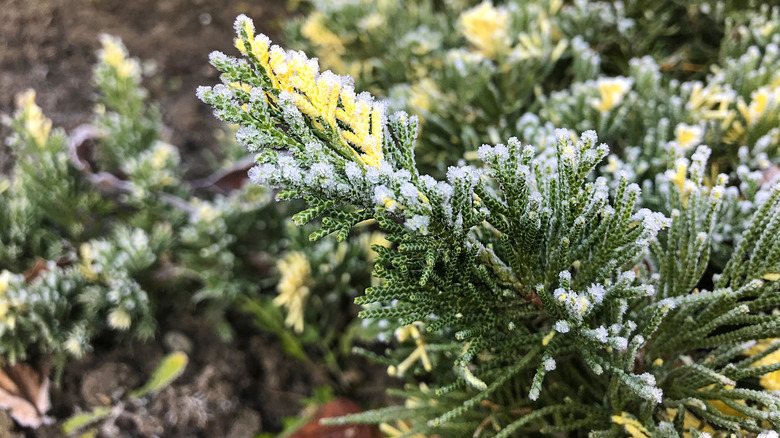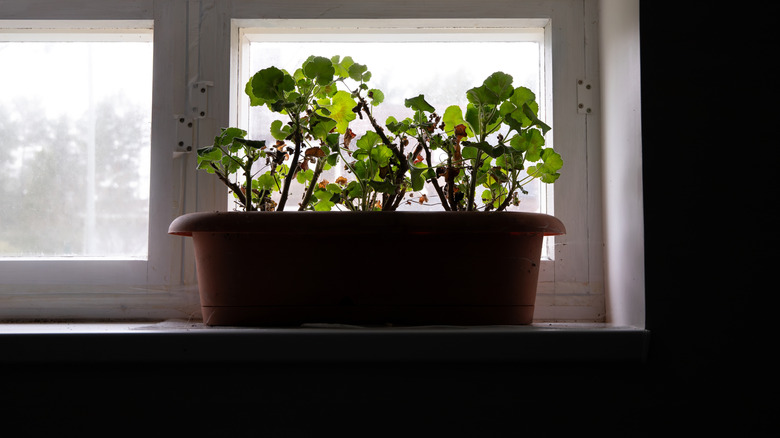Can Storing Plants In Your Garage Help Protect Against Frost Damage?
If you have outdoor plants and live in a climate with cold winters, you've undoubtedly wondered if your garage can provide sufficient shelter to keep them from suffering frost damage. The answer is not an unqualified "yes," but garage storage will work for many gardeners. The key to successfully overwintering your plants in the garage is that it must be an attached, unheated garage so that the temperature remains between 20 and 45 degrees Fahrenheit. Detached garages could work in the same way a garden shed could for some plants in some USDA hardiness zones, but are likely to get too cold for most plants.
Gardeners may be tempted to go all the way and bring plants inside the house to protect them from the cold, but that environment will be too warm for many plants that need a dormant period to grow and flower or fruit properly. Also, avoid garden hacks that won't actually protect your plants from frost, like stringing Christmas lights around plants to keep them warm (today's LED bulbs don't emit enough heat). Similarly, garbage bags won't protect your plants from frost because the plastic material will draw heat away from the plant.
When to move plants into the garage for winter protection (& why it matters)
Prepare ahead of time for moving plants into the garage by monitoring daytime and nighttime temperatures in the garage to ensure they're within the desired range. Know when to expect the first frost of 2025 based on your region, and don't put your plants in the garage until right before that time. Water the plants if the soil gets dry. Don't fertilize or prune any plants at this time, as doing so could delay dormancy.
As you contemplate placing plants in the garage over the winter, it's helpful to know what they're up against without shelter. For example, you may wonder what a hard frost is, and what it means for your perennials and annuals. Frost happens when water vapor in the air forms on surfaces; temperatures are no warmer than 33 to 36 degrees Fahrenheit when frost occurs, and plants typically experience minor damage. A freeze occurs at 32 degrees Fahrenheit, with plants suffering significant damage and greater damage the longer the freezing temperatures last. A hard freeze, sometimes referred to as a hard frost, occurs when the temperature is lower than 28 degrees Fahrenheit for at least an hour. Plants are typically devastated under these conditions. Those few extra degrees of warmth in your attached garage can make a big difference in the life or death of your plants.

